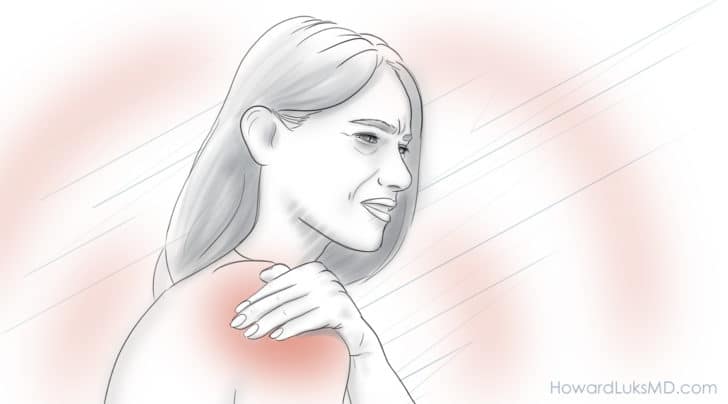
Calcific tendonitis or calcium in your rotator cuff is one of the most painful shoulder conditions I see in the office. The pain from calcific tendonitis can be very severe and can make it impossible to sleep. The inflammation from calcific tendonitis will make it difficult to use your shoulder for any normal daily activities. Most of you want to know why you have calcium in your shoulder and what you can do about it.
Many of you are here on this post because you were told you need surgery for the calcium deposit. That is rarely true. Most patients with calcific tendonitis will not need shoulder surgery.
We are going to discuss effective non-surgical treatments that can address your shoulder pain due to calcific tendonitis.
“Most patients with calcific tendonitis can avoid shoulder surgery for removal of the calcium.”
No one knows precisely what causes the calcium to develop inside your rotator cuff. There are many theories, but none are proven.
If you have very severe shoulder pain and you were told that you have calcium on your shoulder X-ray then you are likely suffering from calcific tendonitis of the rotator cuff.
Calcific tendinitis is a common disease that predominantly affects individuals aged between 40 and 60 years. Women seem to be more affected than men. It is estimated that up to 2% of people will have calcific tendonitis of the rotator cuff. Believe it or not, most people with calcium in their rotator cuff have no pain. That sounds unusual, but it’s true. Calcific tendonitis is also considered to be a “self-limited” disease. That means that the pain, and often the calcium will go away on their own in due time. If your pain is mild, you can stop reading now :-).
If you have severe shoulder pain due to calcium in your shoulder, or more specifically, in your rotator cuff then this post is for you.
What is Calcific Tendonitis?
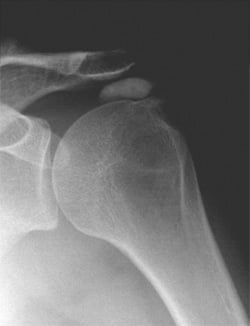
Most patients found to have calcific tendonitis have a very similar story. You are between 40 and 60, and most likely female. You did not injure yourself. A few days age you woke up with a dull ache in your shoulder. Then over the next few days or a week that dull ache became a very intense pain. That pain is often on the side of the arm.
Calcific tendinitis of the shoulder is often an acutely painful condition due to the presence of calcific deposits inside within the supraspinatus or infraspinatus tendons.
Perhaps surprisingly, the incidence of calcium in your shoulder is not higher in individuals who perform heavy-duty or in overhead athletes.
Eventually, your ability to sleep and use the arm for any activity is severely affected. You went to your doctor’s office and an X-ray showed that you have calcium in your rotator cuff. Aside from questioning how you can deal with the pain, you are also concerned if this means that you have calcium elsewhere in your body.
Calcific tendonitis is one of the most common reasons why you will find it too painful to move your arm.
Calcific Tendonitis is a condition where an x-ray shows that calcium is actually inside the rotator cuff tendon itself. We are not sure why calcification occurs. It does not mean that you have any rare diseases.
The calcium causes pressure within the rotator cuff. The pain starts in your shoulder when your body tries to remove or reabsorb the calcium. The body removes the calcium by using white blood cells. Those cells release a lot of irritating chemicals when they are eating away at the calcium. Those chemicals are inflammatory and cause a lot of pain.
Calcific tendonitis of the rotator cuff usually causes profound pain. For some, the pain might be milder. For many of you, the pain in your shoulder can be very severe. The pain is usually on the top or on the side of your shoulder. That is because this is the most common location for a calcium deposit in your shoulder.
Why Do I Have Calcium in My Shoulder?
We do not know why most people develop calcium deposits in their shoulders. It does not mean you are drinking too much milk or taking too many calcium supplements. It does not mean that you have any rare diseases. As of now, we can only say it is due to bad luck. Most of the patients that I see with calcific tendonitis are otherwise healthy and well.
How Do You Treat Calcium in The Shoulder?
Because calcific tendonitis can be extremely painful, most patients are miserable and are looking for a “quick fix”. Patients with calcific tendonitis are usually easy to pick out of a crowd of shoulder pain patients. They look tired from not sleeping, they can not sit still and they are always grabbing their shoulders.
Shoulder ice/compression sleeves might help when the pain of calcific tendonitis is severe. If the pain is tolerable then it is okay to pursue a treatment course of “observation.” Many cases of calcific tendonitis will resolve spontaneously. Yes.. in many of you, the calcium will dissolve and go away. It might take months to do so, but the calcium will dissolve away in many patients.
If, however, your pain is very severe, one of the most effective ways to alleviate your pain is for us to send you to a radiologist who will perform an ultrasound. Not all Radiologists are trained in this technique. Your Orthopedic Surgeon should know who the go-to radiologists are in your area.
The Radiologist identifies the calcium deposit in your rotator cuff using an ultrasound machine. After the calcium in your rotator cuff is identified they will numb your skin with local anesthesia. When the skin is numb, the radiologist can place a needle into the calcium deposit and “wash it out.”
In the majority of people, the calcium deposit has the feel of toothpaste, making it relatively easy for a radiologist to wash it out of your rotator cuff. It is usually not a hard deposit like bone. Although rare, in a few people the calcium deposit will be too hard to wash out.
The pain relief is usually noticed within a day or two. After the procedure, you will be sore for a few days, but the pain should be much different. Usually, within a week or so most of you are feeling much better. The inflammation found in calcific tendonitis can also cause stiffness in many shoulders. After the injection, some people will need physical therapy to improve their shoulder motion and help you return to normal strength and function.
Do I Need Surgery For Calcium in my Rotator Cuff?
Surgery for calcific tendonitis of the shoulder is actually rarely necessary. This is because the ultrasound-guided washouts have been reasonably successful. The key is to find a surgeon / radiologist team that works together and is very good at this technique. The ultrasound-guided washout is a small procedure performed in the office. It is performed using local anesthesia in your skin.
On occasion, the calcium which was washed out of the rotator cuff will cause intense bursitis or inflammation within the shoulder. If this happens, and you do not respond to ice and anti-inflammatories then there is a chance that you will require keyhole or arthroscopic surgery to remove the inflamed tissue. This is a very rare instance.
The recovery from an ultrasound-guided “washout’ for calcific tendonitis is usually quick. Most people will notice soreness for a day or two afterward. Within a week the most severe pain you were having is gone. You might be left with a dull ache that will improve further with exercise and physical therapy.
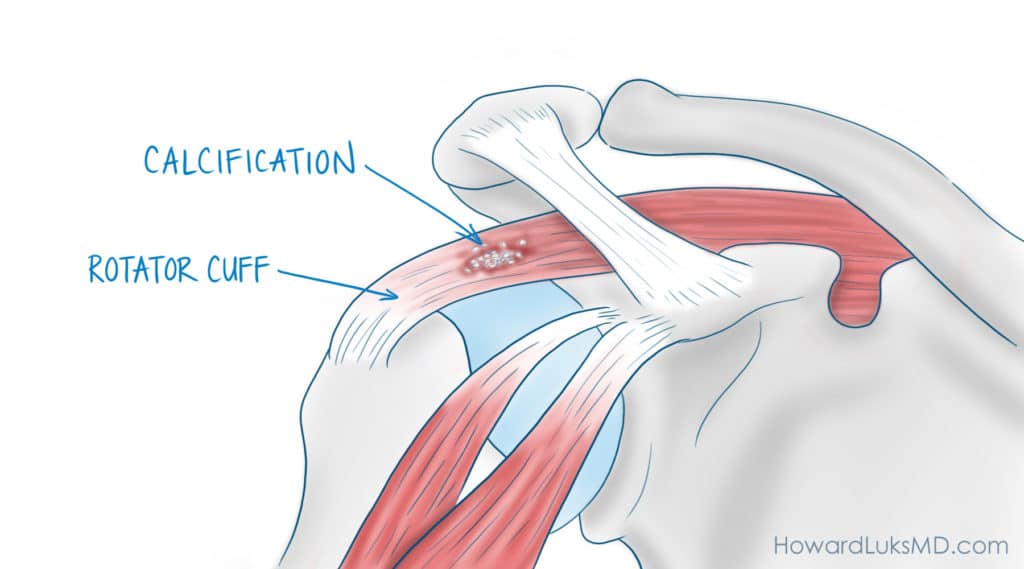
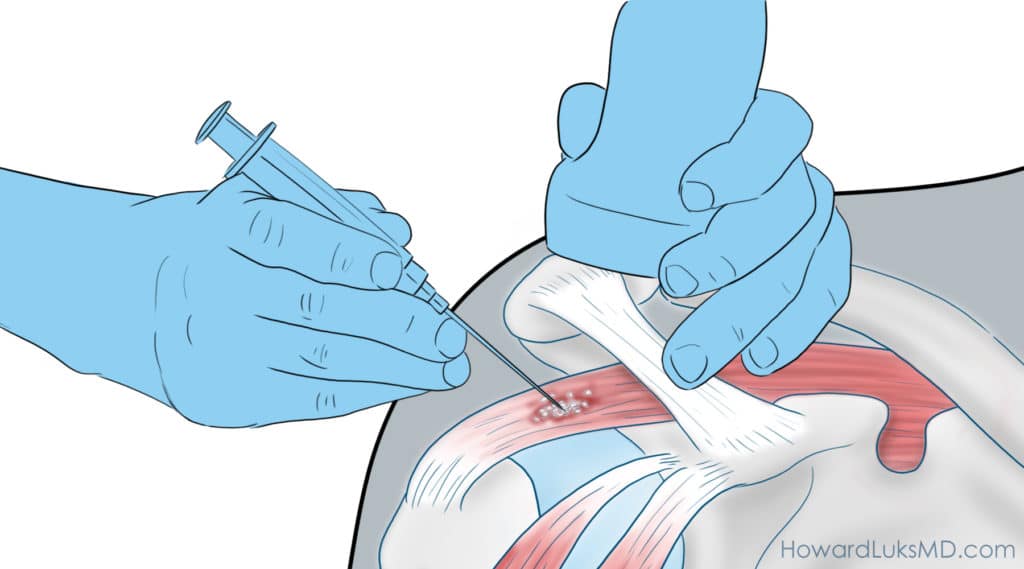





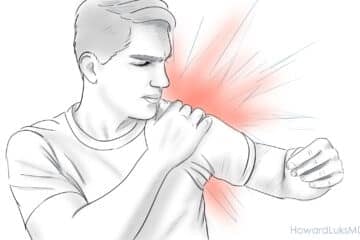




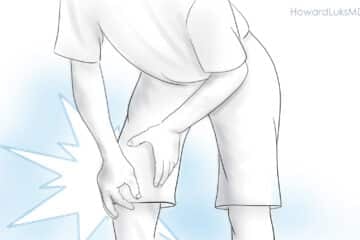


I leave in Atlanta GA and cannot find a doctor who performs this procedure. I am offered a surgery.
Can you recommend some one in Georgia who is experiences in ultrasound guided washout?
Call the radiology department at Emory .. they will almost certainly have a radiologist who performs Ultrasound guided injections.
I have had calcium deposits in my right shoulder for about 4 years now. 3 years ago I pursued ‘needling’ in Northern Ireland – although no one seemed to have heard of it. I eventually had a private treatment where the radiologist examined me with an Ultrasound. He said the deposits were too hard to remove (and showed me 2 tiny bits of hard substance he’d got out) and ended up giving me a steroid injection instead which I don’t think made any difference. I’m now living back in England and have found the discomfort from my shoulder has got worse and my left shoulder also has similar aching. Please can you advise – is needling/lavage still a possible option or does it not work if the calcium deposits have hardened? In all my research online most studies talk about the calcium softening and being most painful in the reabsorption phase, but my previous GP and the Northern Irish radiologist contradicted this saying the longer you have the deposits the harder they get – ultimately turning into bone.
HI Natalie ..You can find me on Curely where I can answer questions by text or email … Join me there. http://www.curely.co/
Thank you for responding. Unfortunately I can’t access Curely – I need to move into the 21st Century and get a smartphone soon!
In the meantime is it possible to confirm whether sometimes calcium deposits do harden with time and/or can be too hard to remove through needling/lavage?
Many thanks – and for introducing me to Curely – I will download it as soon as I get a new phone.
A radiologist will usually be able to wash the calcium out. Very rarely is it too hard.
I’ve been told that I may have myositis ossificans (Calcified Deposit) in my hip (glute muscle). Is it possible to perform this “ultrasound guided washout “?
no.. because that is actual bone. the calcium in the shoulder has the consistency of toothpaste.
Ahhh toothpaste. That’s why it washed out so easily on a YouTube video. The deposit in my hip is pretty hard, bone-like. I believe it is causing inflammation, pain AND preventing the development of the muscle in my hip. Is the removal going to be a little more complex? What would you suggest I look for regarding a doctor and procedure that is less invasive.